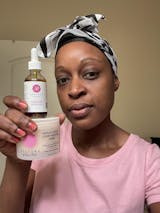The Dirty on Hair Product Ingredients
Paraben free. Sulfate free. Silicone free. Vegan and cruelty. Give us ALL the marketing buzz words. But what do they really mean when it comes to what you’re putting in your hair?
We see these words plastered across hair products, but is it important? What’s really inside hair products and how does it affect your hair? Oftentimes, we shop for what sounds healthy. The proof, however, is in the INGREDIENTS.
Let’s talk about what to look for!
Brands are required to list the scientific name of ingredients on the labels, as well as the layman terms for ingredients. That’s why it’s important that you use Mr. Google to do a little research on an ingredient you can not pronounce.
All scientific words aren’t harmful for you. Here are two tips to remember and help you understand how to read the ingredients on hair products. The next time you’re about to swipe your card, you’ll be an informed customer!
- The Top 5: Sometimes, a product label can be intimidating, with more than 20 ingredients listed. The key is to focus on the first five. Ingredients are listed in order of how much is included in that particular bottle, going from highest to lowest. So if the first ingredient is “water,” you automatically know the product is majority water since it’s listed first.
Homework from the Hair Nerd: Grab one of your favorite Restore RX Beauty products, read the top five ingredients, and research their benefits for your hair texture!
- Learn the Ingredient’s Job: All ingredients have a particular job when it comes to how they perform on your hair. Some moisturize, while others handle the task of providing protein or shine to our hair shaft. Note the ingredients most associated with each hair goal:
Protein: hydrolyzed wheat protein, hydrolyzed keratin, hydrolyzed silk protein, keratin, hydrolyzed oat flour, hydrolyzed soy protein
Volume/Fullness: biotin, also known as Vitamin B7 and Vitamin H, sea salt
Moisturizing: glycerin, aloe vera, jojoba oil, shea butters, avocado oil, stearyl alcohol, cetearyl alcohol, behentrimonium methosulfate
Heat styling: silicones such as dimethicone and amodimedthicone
Shine: natural oils such as coconut oil and argan oil
Detangling/Provide Slip: fatty alcohols such as behenyl alcohol, cetyl alcohol, cetearyl alcohol, Isocetyl alcohol, isostearyl alcohol, lauryl alcohol, etc.
If the mere thought of doing all this “homework” is giving you a flashback to your high school chemistry class, try the “Think Dirty” app. After scanning a beauty product, it will be ranked anywhere from one to ten on the “dirty meter.” It will let you know how safe the hair products are for your internal and external health.
Remember it’s your scalp and hair. It’s also your responsibility to research what you’re putting on it.






